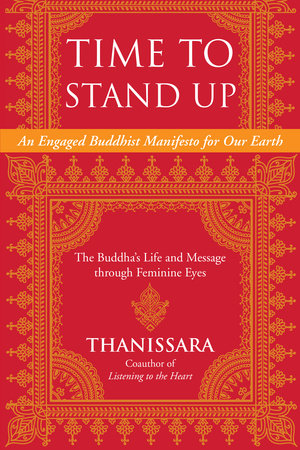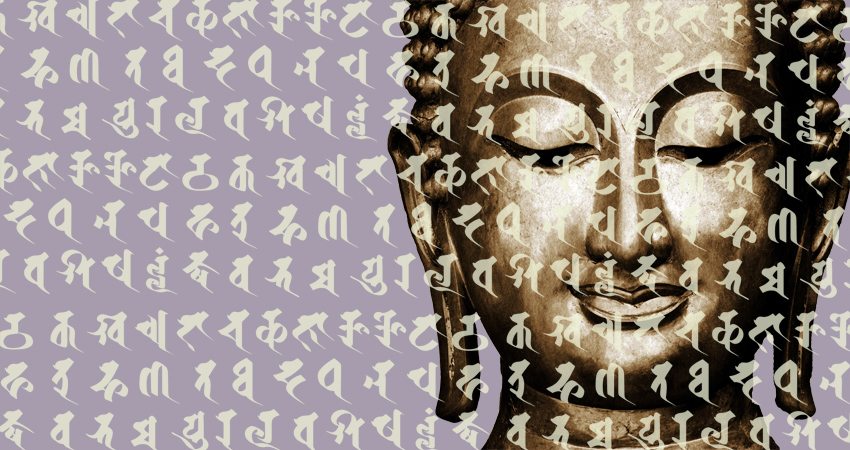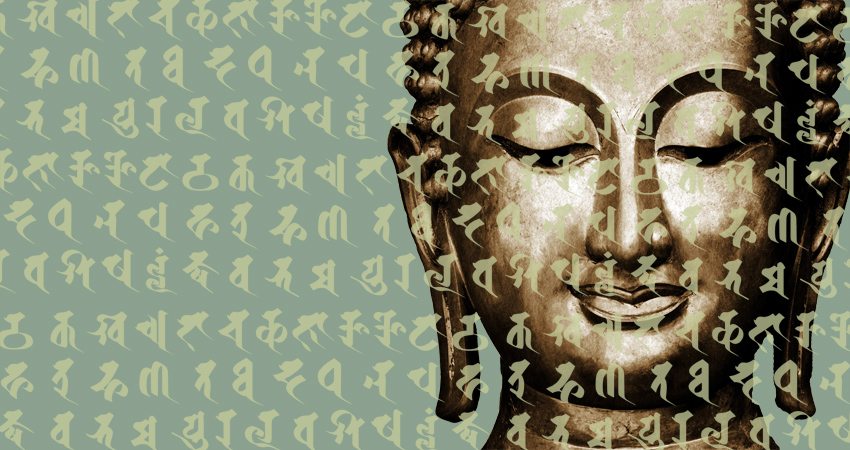
Q&A with Thanissara: Was the Buddha a Feminist?
Categories: Spirituality & Religion
 In this month’s exploration of the sacred feminine—what it is, what it means, and how it affects us and our world—Thanissara answered some questions about its relationship to Buddhism, the environment, and values-based action. This is the first in a dedicated series of Q&As. In today’s post, we posed the question: was the Buddha a feminist?
In this month’s exploration of the sacred feminine—what it is, what it means, and how it affects us and our world—Thanissara answered some questions about its relationship to Buddhism, the environment, and values-based action. This is the first in a dedicated series of Q&As. In today’s post, we posed the question: was the Buddha a feminist?
Thanissara is the author of Time to Stand Up: An Engaged Buddhist Manifesto for Our Earth: The Buddha’s Life and Message through Feminine Eyes.
Q: What is the relationship between the sacred feminine, Buddhism, and an environment in a state of crisis? In any sense, was the Buddha a feminist, and how did he access and balance femininity and masculinity on his path to enlightenment?
A: Buddhism recognizes the interdependence of all things. This means we exist in a web of life in which we are all connected. For example, our collective survival depends on humans evolving out of an egoist consciousness that falsely believes it exists in an independent state. The individuated self has its own necessary function, but when the truth of interdependence is consistently denied, we become imprisoned. It might be a very attractive prison, but the depths of the mind’s energy will invert and be trapped into reactive patterns of fear and desire. The lack we feel, that burns so deep, continually generates an insatiable restlessness that fuels our poignant, destructive, and ultimately futile attempts to control, own, and dominate the world around.
On the other hand, a direct knowing of our interconnection initiates us into the sacred feminine. While women likely have an easier access into this truth, the sacred feminine is not defined by gender. Essentially, it is a deeply receptive way of being in relationship with a living world, where everything is consecrated by an indwelling consciousness. Even the molecules in the air are pregnant with life giving energy. Trees, plants, rocks, animals, and the beings around us are all part of one living gestalt. When we tune into that, then the Eros energy of undifferentiated love suffuses our being.
Unfortunately, our current worldview has de-souled the living world, rendering it inanimate, dead, and devoid of any sacredness. Patriarchy, and patriarchal religions, of which Buddhism is one, fears the energy of Eros due to its connection with sexual power, birth, and the instinctual realm of primal feeling. Patriarchy goes to great lengths to repress and demonize the living influence of the sacred feminine, and therefore women, only to replace it with the distortions and oppressions of power.
The reclamation of the feminine is supported by body-based awareness practices. Meditation that opens into the felt experience of body is a good starting place, and is primary to the Buddha’s teaching. It reconnects us to the energetics of being within a relational field. Our thoughts make us feel independent and separate, but sensitivity to the energetic experience of embodiment reveals how deeply interconnected we are with the environment, people, and the world. The body also carries ancestral, familial, personal and karmic history, all of which can be accessed through awareness based practices. Bringing attention to the body, its feelings and sensations, is not easy, at least until we develop some meditative capacity, but it is important. Increased body awareness opens beyond the cognitive into a different way of knowing, one that is born of contemplation. This knowing is intuitive, and while not dependent on the cognitive, when actualized through the cognitive, it distills into authentic wisdom.
When meditation and Dharma practice is overly focused on a hierarchy of attainment, and the development of techniques, it tends to be subsumed into a patriarchal agenda of power and control. Then rather than understanding our inner processes, we are disassociated from them. Our collective wound of soullessness, emerging from centuries of being ripped from the web of belonging, undermines our ability to trust the Dharma. Instead, we sometimes try to fill our inner lack by using the Dharma for accumulating prestige, wealth and acknowledgment. When this happens the liberating potential of Dharma practice is distorted and diluted. Instead we become conditioned as “good meditators” or “nice, spiritual people” and perhaps unwittingly acquiescent in another competitive, money-based industry, which leaves us forever chasing the illusive goal of “peace” and “enlightenment.” These pitfalls—alongside introversion and ambivalence about engaging the world, or settling for being a bit more functional in dysfunctional systems—undermine the ability of Buddhism to vitalize its radical edge in service of the environment.
What is important to understand is that the Buddha was radical; he engaged his culture, challenged it, and changed it; his example can inspire the kind of activism we now need to secure a livable planet. It is also my understanding that it was not possible for the Buddha (or any one else) to open into “enlightenment” without going through the door of the sacred feminine. This happened for the Buddha when he realized the utter uselessness of his attempts to control his experience through the life-denying spiritual practices of his day. On the verge of death, due to his self-inflicted asceticism, he finally accepted an offering of milk rice from the maiden Sujata. At that moment, he opened to the energy of Eros, or the archetypal feminine. This, and a childhood memory that led him to be with his breath, became the ground of his awakening. An awakening that was confirmed by Mother Earth, who had borne witness to the struggles he undertook through numerous cycles of rebirth.
Once the initiation of the sacred feminine is undertaken, then, as the Buddha, the balance of masculine and feminine energy is actualized through service to the Dharma. The masculine defines, clarifies, and directs, while the feminine attunes, resonates, and responds. A Buddha is one who perfectly balances both energies. This ideal is depicted in Buddha statues, which tend to be androgynous. The Buddha’s own service led him to open the doors of his new religion to women. Women loved the Buddha because he offered them self-determination. He accepted and supported them. The erroneous misogynist distortions scripted into Buddhist transmission over centuries, is not the work of the Buddha. He did not fear women; he freed them. In the same way, honoring the sacred feminine, and restoring its rightful place will not only invigorate Buddhism, but it will help bring our world back from the brink of destruction.
Q: What can women, and those attuned to feminine energy, qualities and values bring to a world in crisis?
A: The feminine is primarily relational. It feels with others, and also tends to be receptive to subtler levels of energetic information, nuance, and complexity. Relationship implies responsibility, the ability to respond authentically. What the world really needs, at this time, is merciful, healing, and empathetic alliance, not more brute, exploitive use of power activated by a separative consciousness that seeks to dominate and extract from nature.
Sometimes compassion is considered weak, but to withstand hatred, and turn it around into clarity and careful consideration, takes far more strength than the use of violence. We can see that in the examples of Aung San Suu Kyi and Mr. Mandela. We can use examples of those who challenged power without defaulting to hatred, to help us see how it is done. What is important in these times is to realize we can’t act alone. We need to collaborate so that together we can generate, as Gandhi called it, Satyagraha, a “Truth Force” that can challenge the corporate oligarchy, which is condemning us all to live in an unviable world.
In part two, Thanissara discusses ways we can access and engage the sacred feminine in our meditation practices. Stay tuned!
Tags: Buddhism Thanissara



